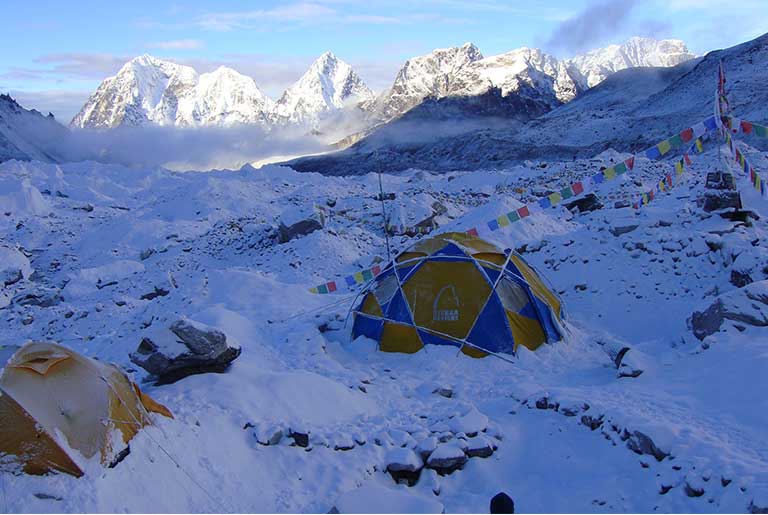Mt. Lhotse Expedition (8516m)
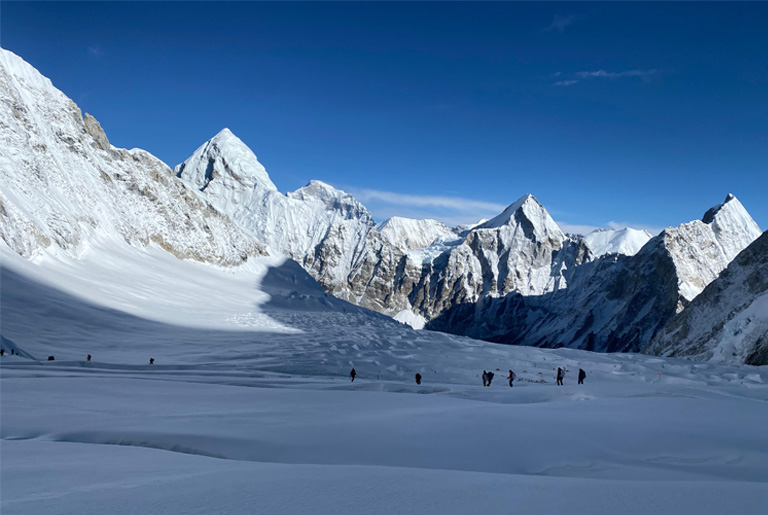
“Lhotse” which means south peaks is part of the Everest massif. By virtue of it being 3km south of Mount Everest, from which it is separated by the South Col. It is considered an independent mountain. It was first climbed by F. Luchsinger & E.Reiss in 1956. An impressive ring of three peaks makes up the Lhotse massif: Lhotse East or Middle, Lhotse & Lhotse Shar. The South Face of Lhotse is one of the largest mountain faces in the world. We attempt to climb the normal route to the tallest peak of the Lhotse massif. Lhotse BC is located beside the Khumbu Glacier, same as Everest BC. The section during the climb, which has been unanimously declared the most dangerous, is the Khumbu Icefall. The first successful ascent of the mountain was in 1956 by the Swiss on the West Face.

The South Face though attempted many times was successful climbed only in 1984 by a Czech expeditions. This beautiful massif also holds immense promise as it is little developed and offers fascinating opportunities. Lhotse stands at 8516m, making it the fourth highest mountain in the world. It is situated at the border of Tibet and Nepal. Its long east-west crest is located immediately south of Mount Everest, and the summits of the two mountains are connected by the South Col, a vertical ridge that never drops below 8,000m. Lhotse has three summits: Lhotse Main 8516m, Lhotse Shar 8383m and Lhotse Middle or East 8413m. Lhotse is the fourth highest mountain in the world. Lhotse to the south of the world’s highest peak is a part of the Everest massif. By virtue of it being 3km south of Mount Everest, from which the South Col. It separates it is considered as an independent mountain. It was first climbed by F. Luchsinger & E.Reiss in 1956.
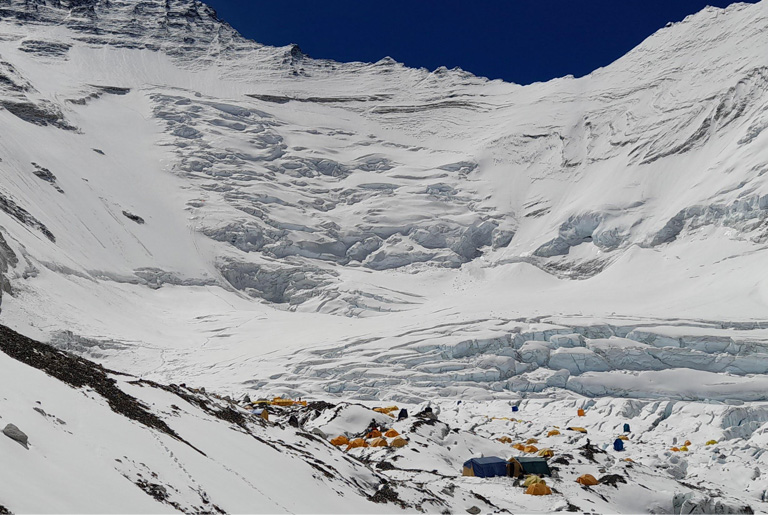
An impressive ring of three peaks makes up the Lhotse massif: Lhotse East or Middle, Lhotse & Lhotse Shar. The South Face of Lhotse is one of the largest mountain faces in the world. We attempt to climb via the normal route to the tallest peak of the Lhotse massif. Lhotse BC is located beside the Khumbu Glacier. The section during the climb that has been unanimously declared the most dangerous is the Khumbu Icefall. The first successful ascent of the mountain was in 1956 by the Swiss through the West Face. The South Face though attempted many times but was successfully climbed only in 1984 by a Czech expedition. This beautiful massif also holds immense promise as it is little developed and offers fascinating opportunities.
Day 1: Arrival in Kathmandu (1,300 m) – Welcome and Expedition Briefing
Your adventure begins the moment you land in Kathmandu. Our team greets you at the airport and escorts you to your hotel in the city. The rest of the day is free for rest after your long journey. You can explore local markets or enjoy a peaceful evening at the hotel. Kathmandu’s vibrant culture gives you the perfect welcome to Nepal. A short briefing about the expedition will be provided. Overnight at hotel.
Day 2: Kathmandu Sightseeing and Cultural Exploration (1,300 m)
Spend the day exploring the cultural and spiritual heart of Kathmandu Valley with a local city guide. Visit Pashupatinath Temple, the most sacred Hindu temple, known for its open-air cremation rituals. Continue to Boudhanath Stupa, one of the world’s largest Buddhist stupas, radiating peace and devotion. After lunch, explore Patan Durbar Square, the city of fine arts, filled with ancient temples, palaces, and exquisite Newari craftsmanship. This cultural immersion connects you deeply with Nepal’s spiritual roots before your ascent begins.
Day 3: Expedition Preparation and Briefing at the Ministry of Tourism (1,300 m)
Today is dedicated to final expedition preparations and official procedures. Attend the Ministry of Tourism briefing, where you’ll receive climbing permits and government authorization for the Mt. Everest ascent. The day also includes a comprehensive review of climbing equipment, logistics, and safety protocols. Meet the Sherpa guides, discuss the climbing plan, and ensure all gear is properly checked. Spend the evening organizing your personal items and mentally preparing for your Himalayan journey.
Day 4: Fly to Lukla (2,840 m) and Trek to Phakding (2,640 m)
Take an early morning scenic flight to Lukla, the gateway to the Everest region, offering breathtaking views of the Himalayas. After meeting the local porter team, begin your trek through lush valleys and along the Dudh Koshi River. The trail leads to Phakding, a small village surrounded by pine forests and traditional Sherpa houses. Enjoy your first night in the Khumbu region as you adjust to the mountain air. This short hike serves as a gentle introduction to trekking in the Himalayas.
Day 5: Trek from Phakding to Namche Bazaar (3,446 m)
Continue along the trail, crossing several suspension bridges draped with prayer flags over the roaring Dudh Koshi River. Pass through beautiful villages like Monjo before entering Sagarmatha National Park. A steep ascent brings you to Namche Bazaar, the bustling trade hub of the Khumbu region. Namche offers modern comforts, local markets, and stunning first views of Mt. Everest. Take in the vibrant Sherpa culture as you settle into the high mountain atmosphere.
Day 6: Acclimatization Day in Namche Bazaar (3,446 m)
Spend the day acclimatizing to the increasing altitude, crucial for your long-term success on Everest. Explore nearby viewpoints such as Everest View Hotel for panoramic scenes of Ama Dablam, Lhotse, and Everest. Visit the Sherpa Museum to learn about Himalayan mountaineering history and traditions. This active rest day helps your body adjust to thinner air while giving you time to enjoy the charm of Namche. Enjoy a relaxed evening and prepare for higher climbs ahead.
Day 7: Trek from Namche to Debuche (3,820 m)
Leave Namche behind as you trek through rhododendron forests and traverse high mountain ridges with stunning views. The trail passes through Tengboche Monastery, the largest monastery in the Khumbu region, where monks perform daily prayers surrounded by Himalayan peaks. Continue downhill to reach Debuche, a quiet settlement nestled among fir trees. The peaceful surroundings offer a perfect place for reflection and rest. Overnight in Debuche, enjoying the crisp mountain air.
Day 8: Trek from Debuche to Dingboche (4,410 m)
The trail ascends through alpine forests and crosses the Imja River before reaching Pangboche, the highest permanent settlement in the region. Continue to Dingboche, a beautiful valley surrounded by high snow-capped peaks. As you gain altitude, the air becomes thinner and the landscape more rugged. The village offers excellent views of Ama Dablam, one of the most iconic Himalayan peaks. Rest and acclimatize at this stunning location.
Day 9: Acclimatization Day at Dingboche (4,410 m)
Take another essential acclimatization day to help your body adjust to higher altitudes. You can hike up Nagarjun Hill (5,100 m) for breathtaking views of Makalu, Lhotse, and Island Peak. Spend the rest of the day exploring the village or relaxing at a teahouse. Discuss the upcoming journey with your guide and team. Proper acclimatization here ensures better performance and safety during the climb ahead.
Day 10: Trek from Dingboche to Lobuche (4,930 m)
The trek begins with a gradual ascent to Dughla, followed by a steep climb to the memorial area dedicated to climbers who lost their lives on Everest. Continue along the glacial moraine of the Khumbu Glacier with magnificent views of Nuptse and Pumori. Arrive at Lobuche, a small settlement serving as the final stop before Base Camp. The air is thin, and each step requires more effort, signaling you are approaching Everest’s heartland.
Day 11: Trek from Lobuche to Everest Base Camp (5,400 m)
This is a momentous day as you trek along the moraine of the Khumbu Glacier to reach Everest Base Camp (EBC). The trail offers dramatic views of ice pinnacles, glacial ridges, and the legendary Khumbu Icefall. On arrival, the sense of achievement is overwhelming—this is the starting point for the world’s highest climb. Meet the expedition crew and settle into your tents amid breathtaking surroundings. The real adventure begins here.
Days 15–18: Rest and Puja Ceremony at Everest Base Camp (5,400 m)
Spend these days acclimatizing and resting at Base Camp before starting higher rotations. A traditional Puja ceremony is held to bless the climbers and equipment for a safe ascent. Participate alongside the Sherpa team as monks chant prayers and offer juniper smoke to the mountain gods. Use this time to review climbing strategies, test gear, and mentally prepare. The energy and spirituality at Base Camp create an unforgettable start to the expedition.
Day 19: Trek Back to Lobuche for First Rotation (4,930 m)
Descend to Lobuche to begin your first acclimatization climb and sleep at a slightly lower elevation for better adaptation. The return journey strengthens your body and helps it recover from Base Camp altitude. Review your progress and health with the guide before continuing to higher altitudes. Even short descents play a vital role in successful high-altitude adaptation. Enjoy a hearty meal and rest well for the climb ahead.
Day 20: Ascent to Lobuche High Camp (5,400 m)
Climb to Lobuche High Camp, a strategic training ground for climbers before tackling Everest. The route provides hands-on practice with fixed ropes, crampons, and ice axes under your Sherpa’s supervision. Experience technical climbing conditions in a controlled environment. Spend the night at high camp to further enhance acclimatization. The day also helps build confidence for the major summit push.
Day 21: Summit Lobuche East (6,119 m) and Return to Lobuche (4,930 m)
Make an early alpine start toward the Lobuche East summit, an ideal warm-up climb for Everest. The ascent offers incredible 360° views of Everest, Lhotse, Makalu, and Ama Dablam. Reaching the summit builds essential high-altitude stamina and mental resilience. After celebrating briefly at the top, descend carefully back to Lobuche. Rest and prepare for your return to Everest Base Camp.
Day 22: Trek Back to Everest Base Camp (5,400 m)
Return to Everest Base Camp, feeling stronger and better acclimatized for the main climb. The familiar trail through the Khumbu Glacier now feels more manageable. On arrival, settle back into your camp and prepare for the rotation up higher camps. Meet with your guide for strategy discussions and weather updates. This day marks your readiness for the Everest summit phase.
Days 23–24: Rest Days at Everest Base Camp (5,400 m)
Take these rest days to recover, rehydrate, and rebuild energy reserves. The Sherpa team organizes supplies and ensures equipment is ready for the climb. Light exercises and short hikes help maintain acclimatization. The relaxed pace allows your body to recover fully before the long summit rotation. These are also moments to bond with your team and mentally prepare for the challenges ahead.
Days 25–53: Lhotse Climbing Period via South Col (Up to 8,848.86 m)
The core phase of your expedition begins with rotations through Camp I, II, III, and IV along the South Col route. You’ll cross the Khumbu Icefall, ascend the Lhotse Face, and traverse the South Col en route to the summit. Each camp serves as a step higher in your acclimatization journey. After reaching the summit of the world’s highest mountain, return safely to Base Camp. The triumph of standing atop Everest is the culmination of endurance, teamwork, and spirit.
Day 54: Rest and Packing at Everest Base Camp (5,400 m)
After the successful summit, enjoy a full day of rest at Base Camp. Pack up climbing equipment and personal belongings for the return journey. Celebrate your achievement with the Sherpa team over a farewell meal. Reflect on the challenges and triumphs of the expedition. The day is filled with gratitude and accomplishment.
Day 55: Helicopter Flight from Everest Base Camp to Kathmandu (1,300 m)
Take a scenic helicopter flight from Base Camp directly to Kathmandu, offering a spectacular aerial view of the Himalayas. Upon arrival, transfer to your hotel and enjoy the comforts of city life again. The experience of flying over the Khumbu Valley is truly unforgettable. Spend the day unwinding, enjoying a hot shower, and celebrating your success. Evening at leisure in the vibrant Thamel district.
Day 56: Leisure Day in Kathmandu (1,300 m)
This is a free day to rest or explore more of Kathmandu at your own pace. Visit souvenir shops, art galleries, or local cafes to experience the city’s charm. You can also book an optional spa session or cultural dinner. Reflect on your incredible achievement of summiting the world’s highest peak. Prepare for your departure with a sense of fulfillment and pride.
Day 57: International Departure from Kathmandu (1,300 m)
After breakfast, our team will transfer you to the airport for your international flight. Bid farewell to Nepal, carrying unforgettable memories of your Everest Expedition via South Col. Your journey from the streets of Kathmandu to the summit of the world will remain a lifelong accomplishment. We wish you safe travels and hope to see you again in the Himalayas. End of an extraordinary adventure.
Cost Includes
– Airport / Hotel / Airport pick up & drop by Tourist vehicle.
– Standard twin sharing accommodation in three star hotel in Kathmandu; Breakfast included. (6 nights)
– Guided city tour in Kathmandu byTourist Vehicle.
– All your standard Meals during the lodge to lodge trek (Breakfasts, Lunches and Dinners).
– Lodges, Guesthouses accommodation during the trek (Twin sharing and ocasionally dormitory room at guesthouse)
– Full board meal during the camping at base camp, prepared by our cook with hot Tea & coffee.
– All base camp and Advance base camp camping gears (We will provide fully water proof dining tents, kitchen gears, dining table, chairs, toilet tents and shower tent at the base camp)
– High quality Climbing tents for all camps.
– Insurance for all Nepali staffs and porters including helicopter rescue provision.
– Boiled and purify drinking water for the trek and at base camp.
– Expedition permits
– Liaison officer and his round trip flight, insurance, wages, expedition equipments etc.
– High altitude climbing food, fuel, Gas- above base camp (you are also advised to bring some high altitude food yourselves)
– Guide, cook, porters, helpers up to base camp
– Climbing Sherpas (1 member = 1 Sherpa Ratio on climbing day)
– A well stocked first aid and medical kit sufficient to counter any possible mountaineering ailments, from headache to serious injury.
– Oxygen 7 bottles per team climber and 4 bottles per sherpa.
– Extra Oxygen equipment for medical use only.
– A portable hyperbaric chamber (Gamow bag)
– Emergency communications on the mountain and satellite communications link for helicopter evacuation.
– Sightseeing/Monument entrance fees in Kathmandu.
– Farewell dinner for members in Kathmandu.
– Power supply at Base Camp for charging electronics such as phone, laptops and cameras (solar backup)
– Flight cost from Kathmandu – Lukla – Kathmandu including airport departure tax at both airport.
– All our government taxes and vat.
Cost Does not Include
– Lunch and dinner whilst in Kathmandu.
– Travel insurance which covers emergency Rescue and Evacuation.
– International airfare and airport departure tax.
– Nepal entry visa; you can obtain a visa easily upon your arrival at Tribhuwan International Airport in Kathmandu. (Tourist Visa with Multiple Entries for 30 days can be obtained by paying US $ 40 or equivalent foreign currency. Similarly, Tourist Visa with Multiple Entries for 90 days can be obtained by paying US $ 100. Please bring 2 copies of passport size photos).
– Alcoholic and cold drinks.
– Personal trekking and climbing Equipment (See the trekking equipment page).
– Tips for trekking staff and driver (Tipping is expected, see info below).
– Any others expenses which are not mentioned on ‘Price Includes’ section.
Recomended tipping and sherpa bonuses are as follow:
– Allow $80-150 for general non-sherpa crew who stay at base camp.
– Allow $150-250 for sherpas who go up to the base camp.
– Summit climbing Sherpa US$ 400 – 600 per Sherpa.
I want to climb Everest, but there are so many options and the cost is high! Why should I choose Himalayan Trail Blazer? What makes you different to other companies out there?
As we all know that when you make a decision to climb the Everest it is one of the most financially challenging trips to come on. Our prices compared to other outfitters that provide the same product, services, if not a lesser product are actually less! We invite you to shop around and compare, both in price and quality. We feel strongly that you will find us to be the best in the business.
One of the main things that set us apart is our attention to detail. Nowhere else you will find a team of people more dedicated to your success! From the time you contact the office to the time you step on the mountain, our customer service is the best. Another most important reason to choose is our community service.
Our trip prices are much more reasonable compare to many global based companies; it is not because we are economical in service in which we operate. We are local operator therefore we DO NOT re-sell or use second party or agency. Many international companies will take anything from one third to three quarters of the profits this is how your trip price makes huge unusual.
How will the Expedition operate?
After meeting all your team and crew in Kathmandu we fly by helicopter or fixed wing plane directly to Lukla and follow the Khumbu Valley to Namche Bazar. Acclimatizing along the way and relishing in the hospitality provided by our Sherpa friends we reach base camp and after some rest and preparation we begin the ascent. Base camp will be a collection of sleeping tents, as well as a large kitchen and dining tent. We utilize the services of specially trained Sherpa cooks and we import a lot of high quality food to supplement the local produce available. The guides and Sherpas will fix rope on the route and stock the camps with provisions and equipment. By utilizing fixed rope we can climb in average weather, and, if necessary descend to base camp with little problem in case of a major storm. Two or three climbing Sherpas will assist with the load carrying but no more will be engaged in order to avoid clogging the route and spoiling the nature of the climb. When the fixed line is in place, and the two camps are established and stocked, we will climb back up the ropes and make a bid for the summit. Sufficient supplies will be available to support all members. Guides and Sherpas will carry all group gear but members are expected to carry their own personal gear. Radios will be used to co-ordinate the movements on the mountain and provide a safety back-up for the lead team.
Can my friends and family come along to base camp for the expedition?
Sure! This is one of the best points to start the expedition, having family and friends trek to base camp to see you off on your journey. Base camp for non-climbers is not a very hospitable place, but we strive to make your guests comfortable and welcome. Guests for the duration of the expedition are allowed on a case by case basis. The reason for this is simple. On the trip, our job is to be climbing, spending time just at base camp can be quite boring sometimes, so we usually encourage guests to trek in at the beginning or end of the expedition, to join you during the most exciting parts of the trip! Contact us for cost and details.
As the trip is so long, can I bring food and other gear not on the list?
Of course! Most people on the Everest expedition, members end up bringing “the kitchen sink”! We encourage you to bring some of your favorite goodies and tech toys, as base camp will become our home for 2 months or so. The more comfortable you are, the more energy you have for the climb, so every little thing helps!
Is there a private trip option too? If yes, how does that work and what are the costs?
Taking as your Everest expedition is a once in a lifetime experience, we wanted to make sure you have every possible advantage. Some clients enjoy the added privacy and schedule flexibility that a private expedition allows. A private means you will have your own guides, your share of the Sherpa carry staff, a private dining tent, and optional private communication facilities. This allows you to climb at your own pace, and enjoy the mountain on your own terms. The costs vary depending on how many clients there are in your private group. Please contact the office for details.
Are the skills/prior experiences required for this climb?
Simply, You cannot just decide to write a cheque and go and climb Mt. Everest! A comprehensive climbing resume is required to join our team. The most required factor on our ‘Himalayan Trail Blazer Everest Expedition’ is that the participants must have a solid understanding of mountaineering skills. This should include previous high altitude experience of at least 6,000 meters, mixed with a multitude of Alpine mountaineering and, preferably, you will have taken part in a previous 8,000-metre expedition. Please let us know if you want us to arrange training program in some of the 6000 and 7000 meters peaks in Himalaya before your Everest expedition begin. Our Three Peaks Climbing Courses or Pumori Expedition is appropriate for preparing Everest expedition. By our experience we have found that those who have been to 7000 to 8,000-meters peak previously have a considerably better chance of getting to the top of Everest. We would strongly advise you to climb one of the other 7000 or 8,000 meter peaks before going to Everest, as this is the best way of ensuring the money you spend on Everest will be rewarded by a successful ascent and a safe return home. Exceptionally, however, climbers who have not had the chance of climbing 7000 to 8,000 meters peak may consider Everest if they have a compensating depth of experience.
What is the conditioning level needed for this climb?
You should be in the best shape of your life! This is our longest expedition of the year. It requires patience, stamina, mental fortitude, and a strong will. Summit day can sometimes be over 20 hours long! Day by day the challenges are different, but the more prepared you are, both mentally and physically, the smoother your trip will go.
In a team, how many climbers will be on this expedition?
Maximum 10 members can be included on our Himalayan Trail Blazer Everest expedition. This is to ensure that we can maintain safety and our attention on detail. There may be more in base camp and in the camps on the mountain if there are private expeditions, but they will generally travel separately from the main team.
Can I contact other climbers or guides for this expedition?
Yes, we encourage that. Perhaps there may be someone in your area that can become a training partner, perhaps they can help you source some hard to find gear. The bottom line is that it’s a good idea to have some contact with folks that you will share this experience with.
Will I be sharing a tent or room with other climbers? Is there a single room option on this trip?
You will have your own tent in base camp, but on the mountain, you will be sharing a tent with others. We generally book you in to a single room in the hotel in Kathmandu whilst it is twin share in the lodges on the trek into base camp. A single supplement is available. Please contact us for further details.
Is the food in mountain prepared to international standard in terms of safety?
YES, the food is very safe during the trekking and we recommend you to eat the vegetarian and local food.
Is water provided and is there still water available at higher altitudes? Is it filtered/boiled? Readily available?
Bottled water is easily available at the lodges and tea houses. You can buy bottled water at the cost of USD 2 at lower elevations to USD 4 to higher elevation per littler. You can also drink the normal tap or spring water if you bring the purifying aid with you.
What mode of transportation do you use?
Himalayan Trail Blazer is all about providing you with local insights, lifestyle as well as adventure. Depending on the nature of the travel, the transportation to and from the destination varies from domestic flights to vehicular transportation to even piggyback rides on mules and yaks. We provide you only those options which enhance your local experience while allowing you to travel comfortably and efficiently. We use private tourist vehicles for sightseeing, city tours and pickups. Depending on the group size we use cars, minibus, vans or alternatively 4WD SUVs, more maneuverable in travelling along the narrow and bumpy roads of Nepal. All the vehicles are usually air-conditioned unless we are travelling in cooler areas.
For domestic flights (Kathmandu – Lukla – Kathmandu), we use Tara Air, Agni Air -popular domestic airlines.
What is the best season for this trekking?
Every trekking trip up the mighty Mt. Everest presents its own amazing, unforgettable moments that forever live on in the hearts and minds of those brave enough to make the climb. One of the most unpredictable elements of the Everest region is the weather. If you’re not properly prepared for the twists, turns and volatility of the conditions that can occur in this breathtaking region, you might find yourself in an uncomfortable and unpleasant situation. Here are some weather basics to help ensure that you come to the Himalayas as well equipped and prepared to face anything.
Generally speaking, the nights are much cooler than the daytime hours in the Everest region. Many first-time trekkers are surprised to learn about the incredible range that may occur in a given day. During the day, the thermometer could reach temps as high as 25 degrees C, only to dip down as low as -20 degrees C in less than 24 hours. While there’s no way to know exactly what each day in the mountains will bring, the weather and temperature ranges tend to be somewhat predictable based on the month and season.
Spring – March / April / May / June
Spring happens to be one of the best times of the year to visit the Everest region, although because of this, it can become somewhat crowded. One can meet many other Everest climbers during this season and base camp is full of tents. The beautiful clear blue sky can be seen and the many different species of flower are visible in the lower altitude.
During springtime, the average temperature is 17 degrees C with a maximum of 25 degrees C during sunny days and a minimum of -15 degrees C in the morning and at night for areas above 4000 meters.
July / August Through Mid-September is Monsoon Season
This season is not really recommended to travel as it rains in the lower altitudes, below 3500 meters. In areas above 4000 meters, it rains sometimes and although it is also sometimes dry, very few people travel during this season. There are positives to trekking during the monsoon months, however. The excess rainfall can provide ample chance to see spectacular views of the waterfall and it’s also the best season to avoid the crowds. The maximum temperature during the monsoon season averages 25 degrees C during sunny days with a minimum -15 degrees C in the morning and night at areas above 4000 meters. The average temperature tends to hover around a comfortable 18 degrees C.
Autumn – End of September / October / November
Similar to springtime, autumn in the Everest region is also a crowded season, but it’s one of the best times to trek. While it lacks the beauty of flowers, the clear blue sky can be seen, affording incredible views from just about every angle.
The average temperature during the fall is 15 degrees C with a maximum temp of 20 degrees C during sunny days and a minimum of -10 degrees C in the morning and at night, for areas above 4000 meters altitude.
Regardless of time of year, trekkers should always plan accordingly and bring clothing for both cooler and warmer temps. Layering is always recommended, as are pants that can double as shorts. For a full list of clothing and materials to bring to account for various temperatures and weather changes that can occur in the Everest region, visitors should work closely with their travel provider. This will ensure that the adventure will be enjoyable no matter what the weather and that every possible scenario will be accounted for ahead of time.
I m a Vegeterain, is that a Problem ?
No problem at all because the lodges mostly serve the vegetarian meals. We always recommend our clients to eat vegetarian meals to avoid the food poisoning, eating heavy meals and non- vegetarian meals at the high altitude is not really safe for the stomach.
How much should I tip my guide staff?
This is a difficult thing to gauge. We have seen everything from 20USD to 15,000 USD for an Everest expedition tip. Tipping is not must, but a small way to show your guides thanks for their help. The level of the tip should reflect the level of personal involvement with your guide. Recommended tipping and Sherpa bonuses are as follow:
Allow $80-150 for general non-sherpa crew who stay at base camp.
Allow $150-250 for sherpas who go up to the base camp.
Summit climbing Sherpa US$ 400-600 per Sherpa
Do your guides have trekking guide certificates from the Hotel Management and Tourism Center? Have they received first aid training for high altitude?
Yes, they have all received a 45-day training from the Hotel Management and Tourism Center in Nepal. The guides have also received high altitude first aid training from KEEP (Kathmandu Environmental Education Project).
What safety measures are in place? What safety equipment do your guides carry with them on trek to deal with sickness/accidents?
Lorem ipsum dolor sit amet, consectetur adipiscing elit. Ut elit tellus, luctus nec ullamcorper mattis, pulvinar dapibus leo.
Can I add extra days to my trekking trip?
Holiday should never be about making it to the final point quickly. Along your trek we can add days at your request with additional costs to cover guides, porters, accommodation and food.
What immunizations will I need?
No vaccinations are compulsory in Himalaya, but we do recommend you are covered for diphtheria & TB, hepatitis A, hepatitis B, *malaria, typhoid, polio and tetanus.
We also recommend:
A dental check-up prior to travelling.
That you know your blood group in case of emergency.
If you have any pre-existing medical conditions which might affect you on tour, you make these known to your tour leader and Himalayan Trail Blazer at the time of your booking.
Is there any communication while we are on trekking?
There are telephones in some villages along the trekking routes from which you can make international calls. All our guides are equipped with the local mobile phone. You may wish to pass the number of our guide to your family for the callback or you can make a call from the guide’s mobile and pay him directly for the international call too.

“ Join Upcoming Mt. Lhotse Expedition (8516m) starting from 19-10-2026 and 30-10-2026”
| Trip Facts | |
| Destination: | Everest Region, Nepal |
| Trip Grade: | Moderate to Strenuous |
| Max Altitude: | 8516M (Mt. Lhotse Expedition (8516m) ) |
| Best Season: | Mar–May, Sep–Nov |
| Group Size: | 2–12 |
| Start/End: | Kathmandu |
| Accommodation: | Lodge, Camping (Any One) |
Trek Further. Trek Higher. Join the Journey for 2025-2026.
Challenge the Himalaya. Expedition Bookings Open for 2025–2026.
Ready for the Summit? Join Peak Climbing Season 2025–2026.
Introducing Nepal’s Newest Adventure: Everest Base Camp Drive Trek
What Our Client Says ?
Eric Larsen – Everest Expedition Summit 2010 Autumn
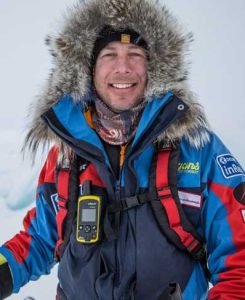
In autumn 2010, I joined the Everest Expedition organized by Himalayan Trail Blazer. Expeditions to Everest during the autumn season are rare, yet the team executed everything with outstanding professionalism, safety, and care. From the meticulous planning to the on-ground support, their expertise was evident at every step. I felt fully supported throughout the journey, and the experience remains one of the most memorable adventures of my life. I would highly recommend Himalayan Trail Blazer to anyone seeking a genuine and well-organized Himalayan expedition.”
Ryan Waters – Dhaulagiri Expedition 2010

Partnering with Himalayan Trail Blazer for the Dhaulagiri Expedition was an outstanding experience. Their logistical support, attention to detail, and deep knowledge of the Himalayan region made all the difference in ensuring the team’s safety and success. From the planning stages in Kathmandu to the final summit push, everything was handled with professionalism and genuine care. I’ve led expeditions across the world, and I can confidently say that Himalayan Trail Blazer sets a new standard in high-altitude guiding and support in Nepal.

Mt. Lhotse Expedition
Mt. Lhotse Expedition (8516m) Trip Overview Itenary Detail Cost Include / Exclude FAQ Map “Lhotse” which means south peaks is...
Read More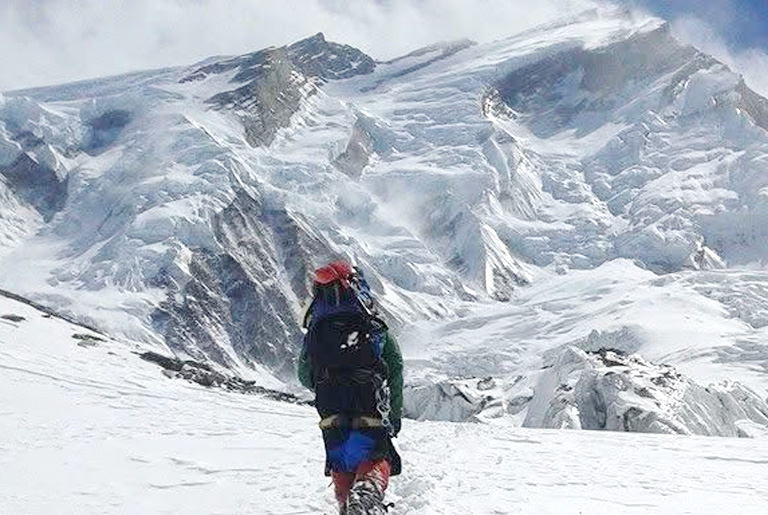
Mt. Annapurna I Expedition
Mt. Annapurna I Expedition (8091m) Trip Overview Itenary Detail Cost Include / Exclude FAQ Map Annapurna is an enormous Himalayan...
Read More
Mt. Manaslu Expedition (8163m)
Mt. Manaslu Expedition (8163m) Trip Overview Itenary Detail Cost Include / Exclude FAQ Map Mt. Manaslu (8,163m / 26,781ft) Located...
Read More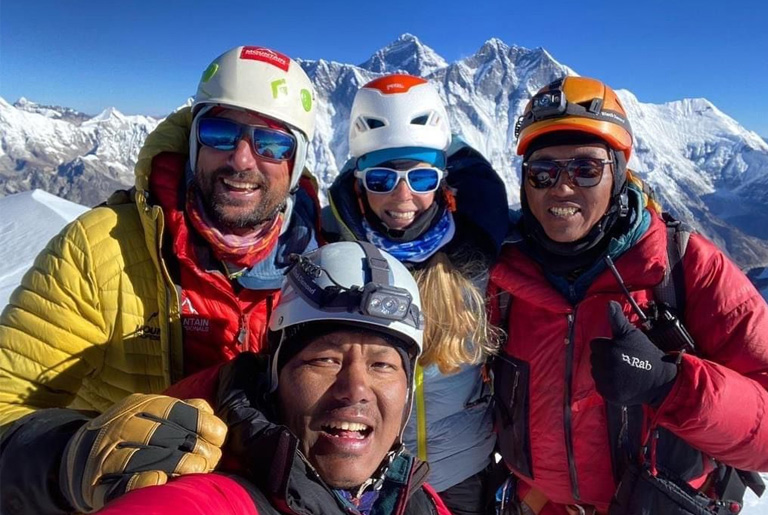
Mt. Amadablam Expedition (6812m)
Mt. Amadablam Expedition (6812m) Trip Overview Itenary Detail Cost Include / Exclude FAQ Map Mt. Ama Dablam expedition has long...
Read More
Mt. Everest Expedition (8848m) via…
Mt. Everest Expedition (8848m) via South Trip Overview Itenary Detail Cost Include / Exclude FAQ Map The highest summit alone...
Read More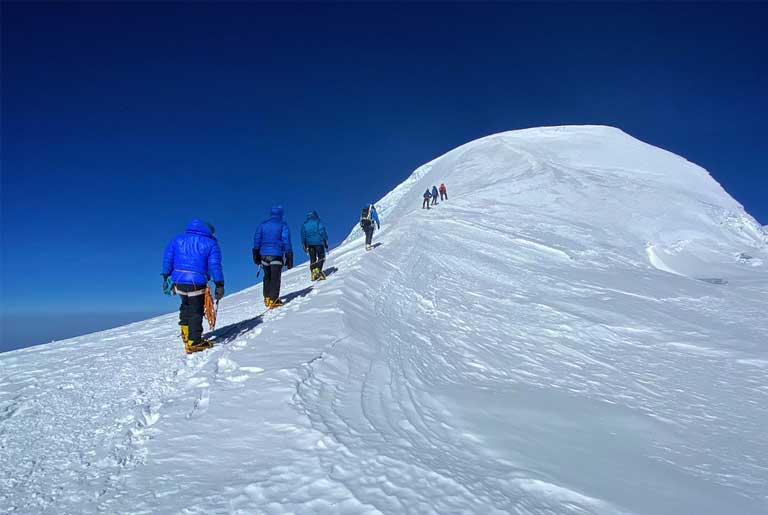
Mera Peak
Mera Peak Trip Overview Itenary Detail Cost Include / Exclude FAQ Map Mera Peak is the highest trekking peak in
Read More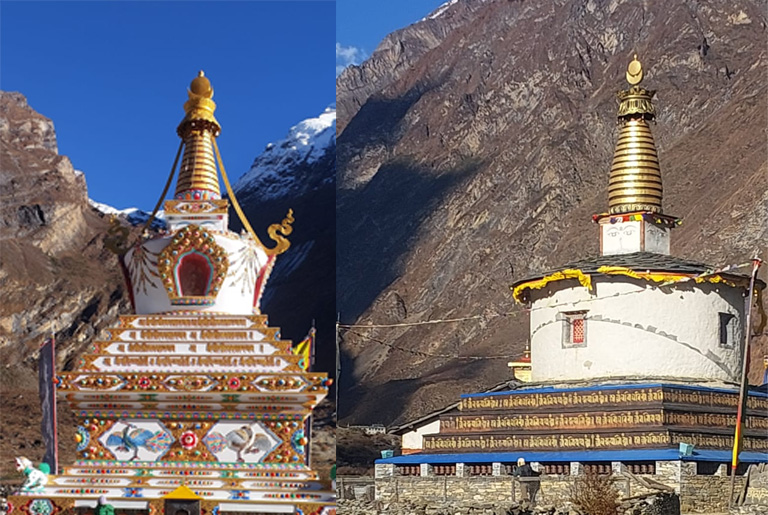
Tsum Valley Trek
Tsum Valley Manaslu Trek Trip Overview Itenary Detail Cost Include / Exclude FAQ Map The Tsum Valley Manaslu Trek is
Read More
Lower Khumbu (Pikey Trek)
Lower Khumbu (Pikey Trek) Trip Overview Itenary Detail Cost Include / Exclude FAQ Map Following the footsteps of Hillary and
Read More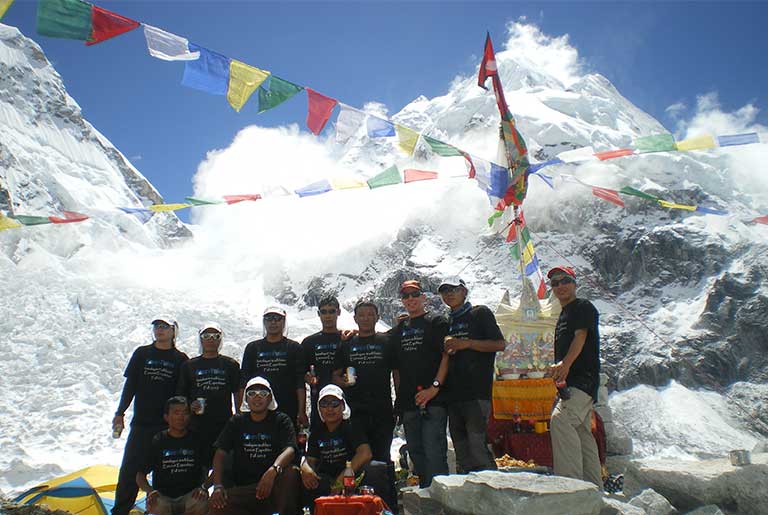
Everest Base Camp Drive Trek
Everest Base Camp Drive Optional Trip Overview Itenary Detail Cost Include / Exclude FAQ Map Following the footsteps of Hillary
Read More

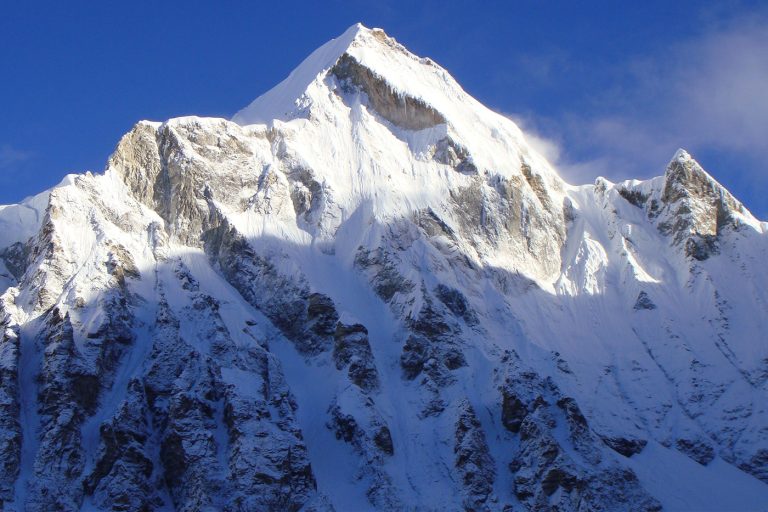
Everest Expedition 2015 Spring
Everest Expedition 2015 Spring Descriptions Himalayan Trail Blazer (HTB) has long been dedicated to organizing world-class climbing expeditions in the
Read More
Manaslu Expeditino, 2014, October
Manaslu Expedition, 2014, October Descriptions Himalayan Trail Blazer has long been recognized for its expertise in leading climbers through the
Read More
Manaslu Expeditino, 2013, October
Manaslu Expedition, 2013, October Descriptions Himalayan Trail Blazer Trekking & Expedition proudly announced the successful conclusion of its Manaslu Expedition
Read More
Manaslu Expedition, 2012, October
Manaslu Expedition, 2012, October Descriptions Manaslu, towering at 8,163 meters, is the eighth-highest mountain in the world. Nestled in the
Read More
Dhaulagiri Expedition 2012, March till
Dhaulagiri Expedition 2012, March till May - Organized by Himalayan Trail Blazer Descriptions In the spring of 2012, Himalayan Trail
Read More
Manaslu Expedition, 2011, October
Manaslu Expedition, 2011, October Descriptions In October 2011, Himalayan Trail Blazer organized a remarkable expedition to Manaslu, led by veteran
Read More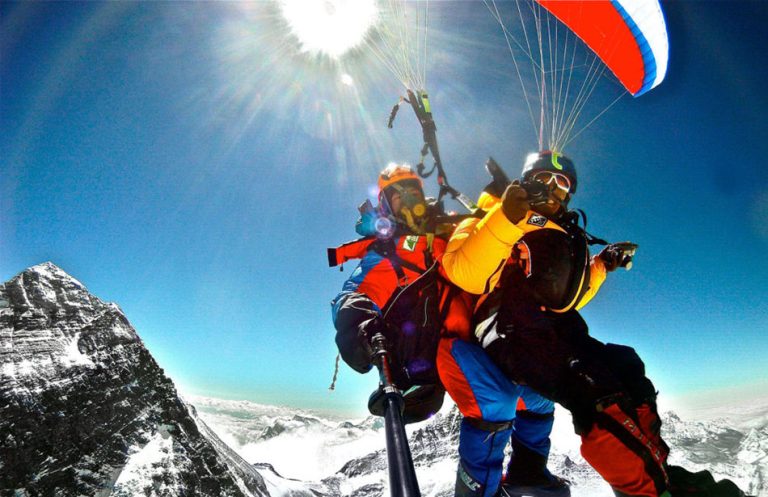
Summit to Sea, 2011 Spring
Summit to Sea, 2011 Spring https://youtu.be/pZ46cuM62ZE?si=oxNaAtznxP38eIK6 Descriptions On June 27, 2011, with the support of Himalayan Trail Blazer, adventurers Mr.
Read More
Everest Expedition via South –
Everest Expedition via South - 2010, October (SAVE THE POLES) -- Eric Larsen Descriptions In Support with Himalayan Trail Blazer,
Read More
Mt. Lhotse Expedition
Mt. Lhotse Expedition (8516m) Trip Overview Itenary Detail Cost Include / Exclude FAQ Map “Lhotse” which means south peaks is
Read More
Tharpa Chuli Peak
Tharpa Chuli Peak Trip Overview Itenary Detail Cost Include / Exclude FAQ Map Tharphu Chuli (locally known as), Tent Peak
Read More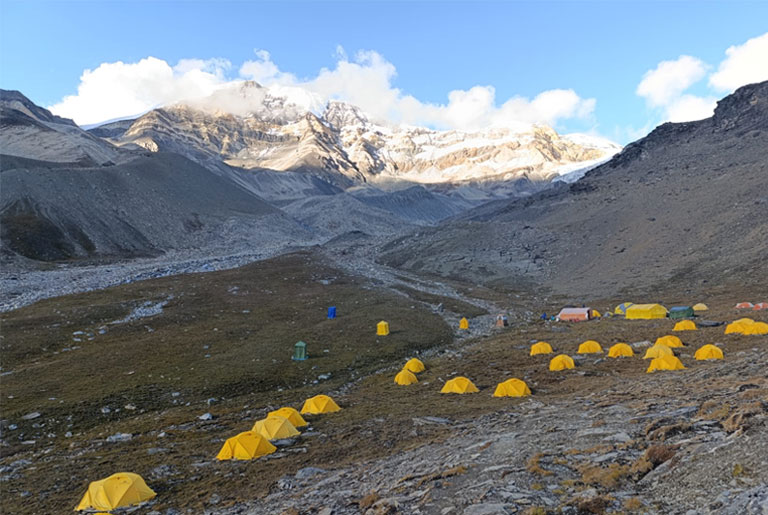
Chulu Far-East Peak
Chulu East Peak Trip Overview Itenary Detail Cost Include / Exclude FAQ Map These peaks are part of the Manang
Read More
Pisang Peak
Pissang Peak Trip Overview Itenary Detail Cost Include / Exclude FAQ Map Pisang Peak stands at elevation of 6091 meters
Read More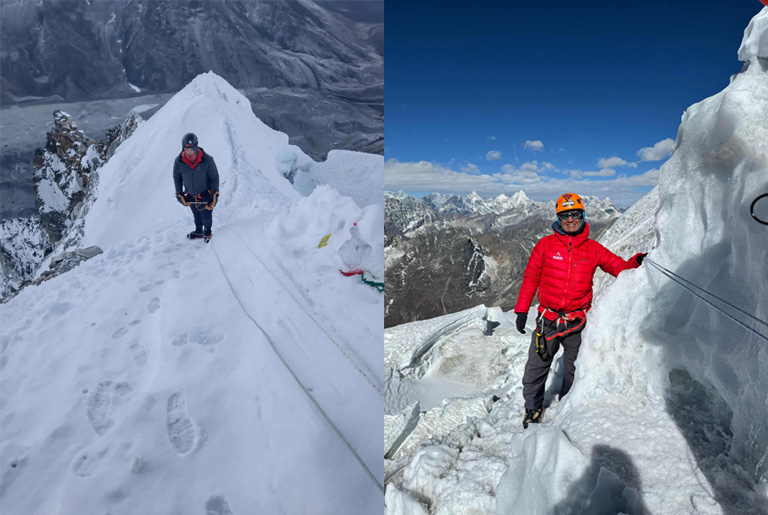
Island Peak
Island Peak Trip Overview Itenary Detail Cost Include / Exclude FAQ Map Island Peak is 6187 meters high and one
Read More
Lobuche Peak
Lobuche Peak Trip Overview Itenary Detail Cost Include / Exclude FAQ Map Lobuche Peak 6119m is one of the popular
Read More
Mt. Annapurna I Expedition
Mt. Annapurna I Expedition (8091m) Trip Overview Itenary Detail Cost Include / Exclude FAQ Map Annapurna is an enormous Himalayan
Read More
Mt. Manaslu Expedition (8163m)
Mt. Manaslu Expedition (8163m) Trip Overview Itenary Detail Cost Include / Exclude FAQ Map Mt. Manaslu (8,163m / 26,781ft) Located
Read More
Mt. Amadablam Expedition (6812m)
Mt. Amadablam Expedition (6812m) Trip Overview Itenary Detail Cost Include / Exclude FAQ Map Mt. Ama Dablam expedition has long
Read More
Mt. Everest Expedition (8848m) via
Mt. Everest Expedition (8848m) via South Trip Overview Itenary Detail Cost Include / Exclude FAQ Map The highest summit alone
Read More

Kanchanjunga Base Camp Trek
Kanchanjunga Base Camp Trek Trip Overview Itenary Detail Cost Include / Exclude FAQ Map Kang-chen-zod-nga”, means “Five Great Treasuries of
Read More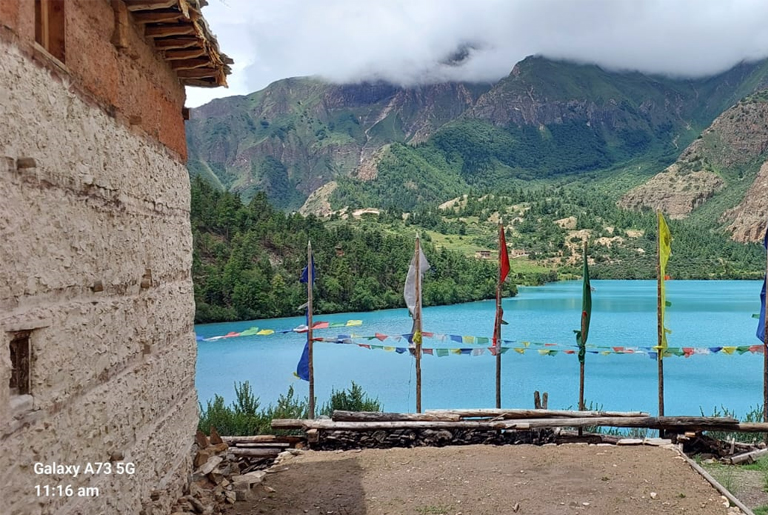
Lower Dolpo Trek
Lower Dolpo Trek Trip Overview Itenary Detail Cost Include / Exclude FAQ Map Make a rendezvous with the remote Himalaya
Read More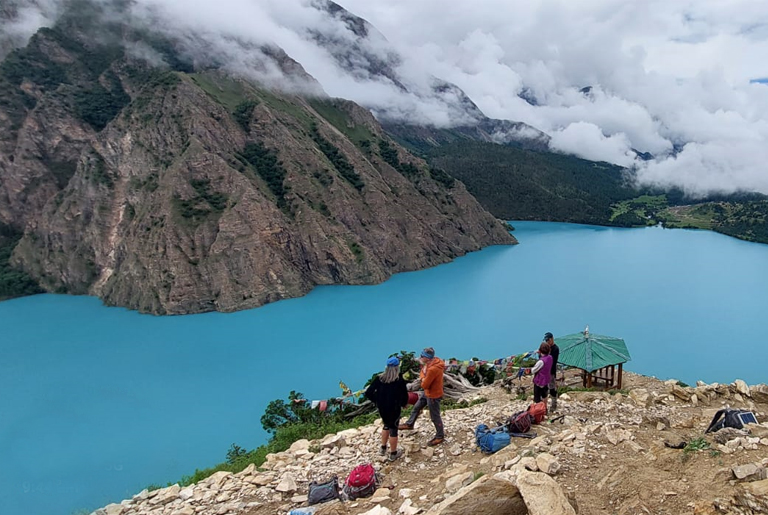
Upper Dolpo Trek
Upper Dolpo Trek Trip Overview Itenary Detail Cost Include / Exclude FAQ Map Dolpo, a land beyond the Himalayas, conjures
Read More
Dhaulagiri Round Trek
Dhaulagiri Round Trek Trip Overview Itenary Detail Cost Include / Exclude FAQ Map Dhaulagiri 8,167m – the 7th highest mountain
Read More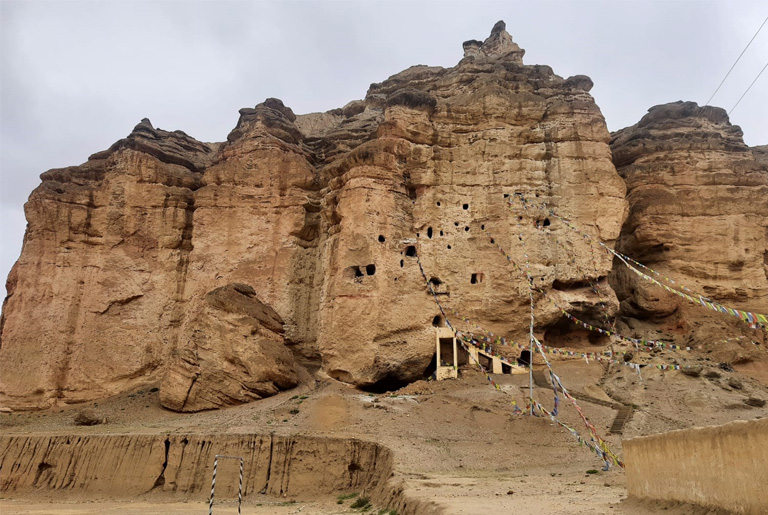
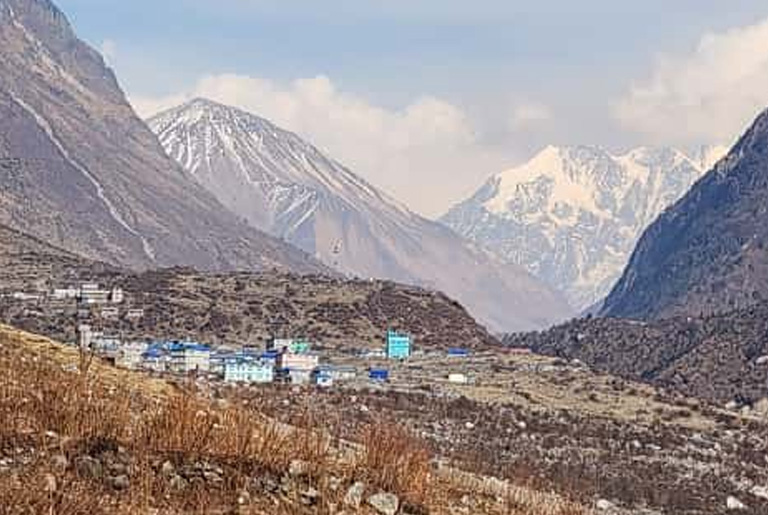
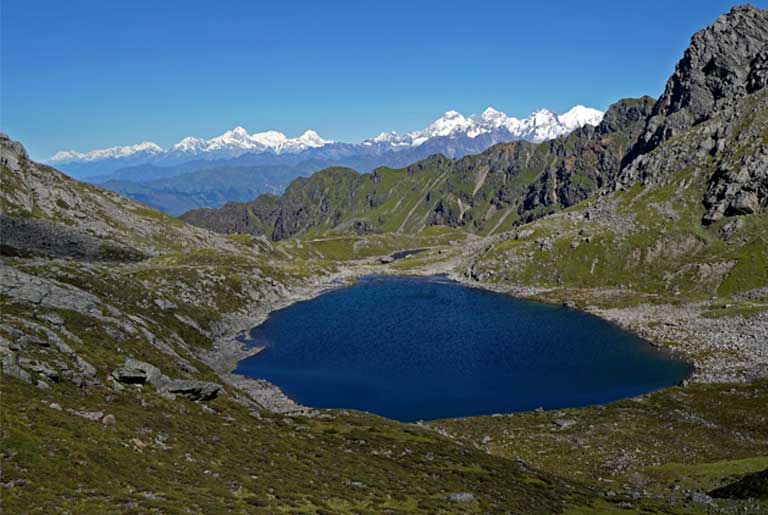

Poon Hill Trek
Poon Hill Trek Trip Overview Itenary Detail Cost Include / Exclude FAQ Map The Annapurna Himalayan (Ghorepani and Poon Hill)
Read More
Naar Phu Trek
Khangla & Thorang passes trek Trip Overview Itenary Detail Cost Include / Exclude FAQ Map Nar Phu, located in the
Read More
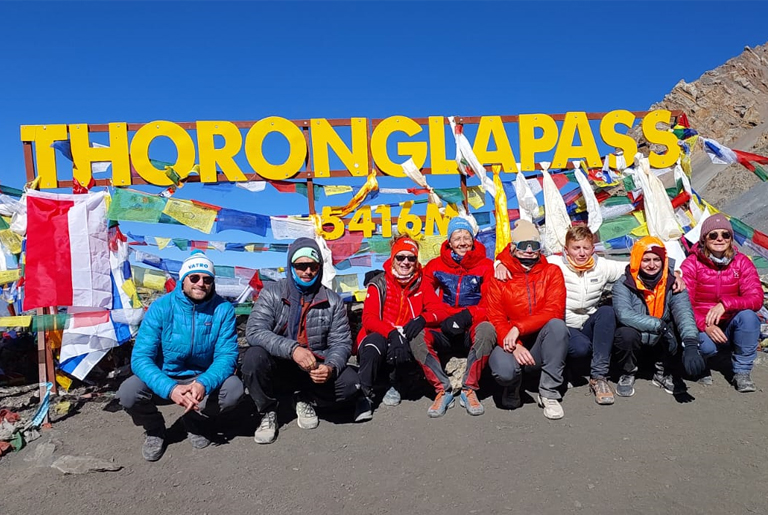

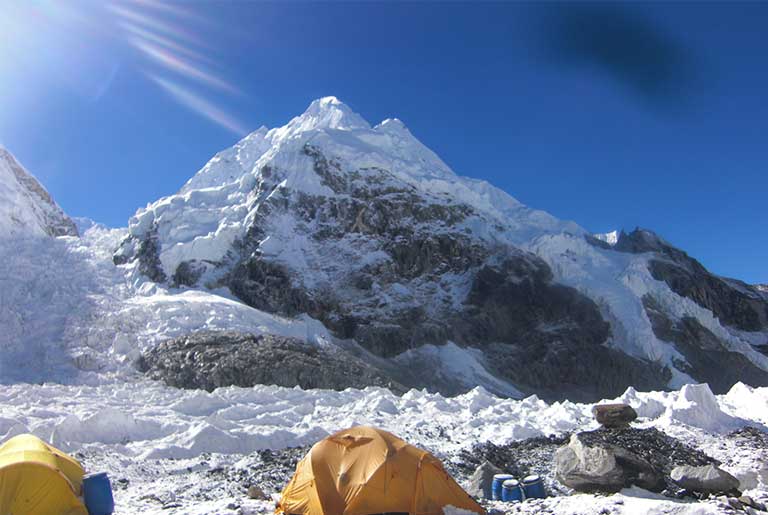
Classic Everest Trek
Classic Everest Trek Trip Overview Itenary Detail Cost Include / Exclude FAQ Map Classic Everest Trek (Jiri to Everest Base
Read More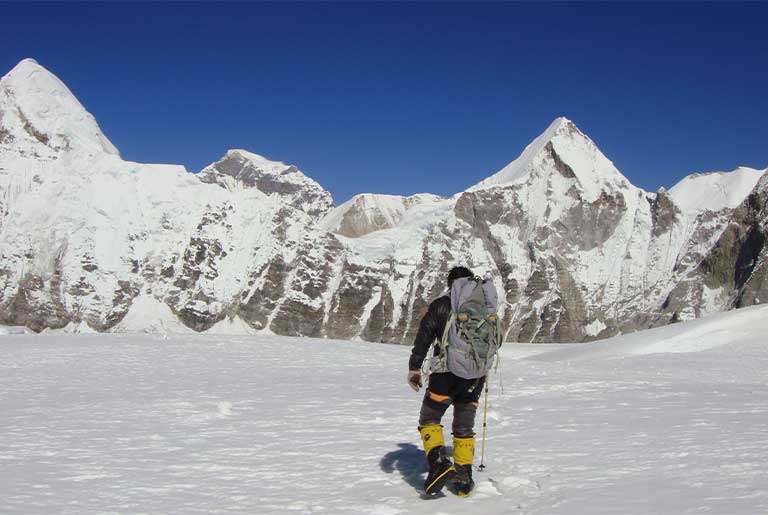


Gokyo Trek
Gokyo Trek Trip Overview Itenary Detail Cost Include / Exclude FAQ Map Trekking around Gokyo valley is considered a traditional
Read More